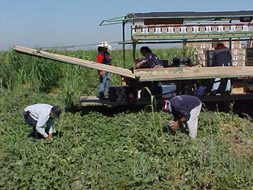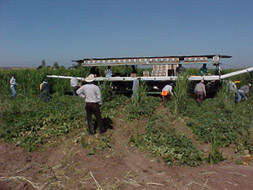 Heat Illness Prevention
Heat Illness Prevention 
Effective Communication Preventing and Responding to Heat Illness
When working in warm or hot weather an effective communication system is a critical part of your program to be successful in preventing heat illness. This is because as temperatures increase and other environmental factors change throughout the workday, employees’ physical and/or mental state can rapidly change into a serious medical condition. Therefore it is important that you stay alert to the weather and with employees input from the field use this information to quickly make the proper adjustments in your work practices and activities, or summon emergency response personnel if necessary. The goal is to make appropriate adjustments in work practices and activities before problems arise or become serious or summon help if it is needed. In order to do this you need to implement an effective communication system to contact employees and supervisors in the workplace.
Some "tools" for effective real time communication in remote locations include the use of cell phones, walkie-talkies, two way radios, satellite phones, and other devices. Employees and supervisors need to be fully trained on how to use your communication system to prevent heat illness.
Guidance, Best Practices and Warnings
Employer must monitor any individual employee who takes a preventative cool-down rest and ask if he or she is experiencing symptoms of heat illness. Employer must also encourage employees to remain in the shade, and not order back to work until they do not have signs or symptoms of heat illness. The preventative cool down rest period shall not be less than 5 minutes in addition to the time needed to access the shade.
If an employee exhibits signs or reports symptoms of heat illness while taking a preventative cool-down rest or during a preventative cool-down rest period, the employer shall provide appropriate first aid or emergency response.
The employer must also ensure effective employee observation/monitoring throughout the work shift.
Best Practices
During warm or hot weather, high heat or a heat wave it is necessary for supervisors and employees to be particularly attentive to each other and communicate on a frequent basis about how they are feeling. It is important to encourage employees not to discount any discomfort or symptoms they are experiencing and to report these problems immediately to their supervisor and coworkers. Employees and supervisors should be fully trained on effective modes of communication for the prevention of heat illness during warm or hot weather, and high heat or a heat wave.
Using an effective communication system allows employees to report to supervisors, co-workers or other designated persons how they are feeling on a real time basis. Some suggested methods include:- T8 CCR Section 3395(e) provides more than one way to observe/monitor for effective communication during high heat. However, it is most desirable at all times to designate a supervisor or an employee to closely monitor and frequently report on all employees' physical and mental condition.
- Train and encourage employees to inform others it they start to feel any discomfort or something out of the ordinary during the work shift.
- Encourage employees to report anything they hear about someone having discomfort or feeling something out of the ordinary with their supervisors.

- Account for the whereabouts of your crew at appropriate intervals throughout the work shift and at the end of the work shift (e.g., keep a log of employees on your work crews including their names, supervisors, work locations, and hours worked on a given day, etc.)

- Require employees who work alone to "check-in" periodically with their supervisors or "designated person(s)".
- Also require frequent "check-ins" by the supervisors or "designated person(s)".
- Always know the whereabouts of the employees who are working in the field by themselves.
- Hold short, frequent meetings (e.g., before and during work) not only during high heat but also during warm or hot weather conditions and a heat wave.

